| The colorful blossoms of crocus, peeping from the ground, are beloved signs of spring. They cheer us, and reward magnificently the low cost and ease of their initial planting, with an ever-increasing abundance of beauty. What's more remarkable, and too little known, is that they are edible. Hence this article. It is odd, that over the decades of my gardening life in Seattle, surely I have planted more than 1,000 Crocus bulbs. Here and there I had read in books that they were edible. I have never tasted any. But at least I did some research into the matter to hereby share with you. |
First, a critical note! Here I am writing about the original Crocus, named scientifically as genus Crocus in the Iris Family. There are some 90 species therein, growing wild from the Atlantic Ocean to W China, but mainly around the Mediterranean Sea. Some other plants in the world that have been called Crocus, and vary from deadly to edible, include:
|
| Anemone patens L. (Wild Crocus) |
| Boesenbergia rotunda (L.) Mansf. (Tropical Crocus) |
| Colchicum autumnale L. (Autumn or Fall Crocus) |
| Curculigo pilosa (Schum. & Thonn.) Engl. (African Crocus) |
Tecophilaea cyanocrocus Leyb. (Chilean Crocus)
|
| Below I enumerate all 19 species that I was able to find described as edible in books or articles. Inasmuch as the species are related to one another, and not known to be toxic except as noted under Crocus sativus, it appears safe to experiment carefully with other species than those listed. |
| It so happens that most of the species and hybrids widely planted in European and North American flower gardens, are not those kinds recorded as eaten wild by people in their native lands. |
| The only Crocus species world famous as regards human consumption, is Saffron Crocus, Crocus sativus. Ironically, this highly esteemed spice and dye plant is also poisonous if too much is ingested. |
| The main human food use of Crocus species has been using the underground portions, popularly called bulbs, and scientifically called corms, as a concentrated caloric source, tasting like hazelnuts or chestnuts. This has occurred for thousands of years, as evidenced by archaeologic remains unearthed in the Kebara cave in Israel. The secondary use --but better known nowadays-- is using the floral stigma of the saffron crocus (and its inferior substitute species) for dyeing and flavoring. |
| Gardeners know that some Crocus species are eagerly eaten by squirrels. Some species bloom in fall, others in winter, but most in spring. All then dry up and rest during the dryness of summer. |
I intend to taste a few flowers this spring, and then bulbs in the summer. I shall update this article with my findings.
|
| Crocus adanensis T. Baytop & B. Mathew |
Bulbs eaten raw or baked in Turkey.
|
| Crocus aleppicus Baker |
| = C. Gaillardotii (Boiss. & Blanche) Maw |
In Jordan, bulbs and soft seeds eaten raw, or bulbs roasted.
|
| Crocus ancyrensis (Herb.) Maw (Ankara Crocus) |
In Turkey and the Levant, bulbs & flowers were once very popular and consumed by people at the end of winter.
|
| Crocus cancellatus Herb. |
When the bulb is about sprouting, it is much prized as a vegetable in Damascus. The soft seeds were also eaten raw. Namely C. cancellatus ssp. damascenus (Herb.) B. Mathew, = C. edulis Boiss. & Blanche.
|
| Crocus carpentanus Boiss. & Reut. |
Eaten in Spain (part unspecified).
|
| Crocus flavus Weston (Yellow Crocus) |
Raw bulbs are eaten.
|
| Crocus Hermoneus Kotschy ex Maw |
In Jordan, bulbs and soft seeds eaten raw, or bulbs roasted.
|
| Crocus hyemalis Boiss. & Blanche (Winter Crocus) |
In Jordan, bulbs roasted. Also, eaten in Turkey and the Levant (part unspecified).
|
| Crocus Kotschyanus K. Koch |
Bulbs cooked.
|
| Crocus longiflorus Raf. (Italian Crocus. Wild Saffron) |
Eaten in W Mediterranean islands (part unspecified); known definitely as a cheap saffron substitute.
|
| Crocus minimus DC. 1804, non Ten. 1822 |
Eaten in W Mediterranean islands (part unspecified).
|
| Crocus moabiticus Bornm. |
In Jordan, bulbs and soft seeds eaten raw, or bulbs roasted.
|
| Crocus nevadensis Amo & Campo |
Bulbs, raw as a snack eaten in Spain.
|
| Crocus nudiflorus Sm. (Autumn Crocus) |
In NW Spain, bulbs, flowers, and seeds nibbled.
|
| Crocus Pallasii Goldb. |
In Jordan, bulbs and soft seeds eaten raw, or bulbs roasted.
|
| Crocus sativus L. (Saffron or Autumn Crocus. Spanish or True Saffron) |
The dried, ground stigma yields the spice called Saffron, as well as a brilliant coloring dye. The bulbs can be cooked as a food. The species is a sterile triploid; not known in the wild. Moderate saffron consumption reduces arteriosclerosis; saffron is also a rich source of vitamin B2. Too much saffron at once is a serious toxin that can prove fatal.
|
| Crocus serotinus Salisb. (Late Crocus) |
In Spain, a saffron substitute, and the bulbs eaten raw as a snack.
|
| Crocus Sieberi J. Gay (Cretan or Snow Crocus) |
Kew reports that the bulbs are edible, tasting of hazelnuts, eaten raw by mountain shepherds in Greece. In Turkey, the leaves are gathered in the wild and eaten as greens.
|
| Crocus vernus (L.) Hill (Spring Crocus) |
| = C. napolitanus Mord. & Loisel. 1817 |
Bulbs eaten in eaten in S France and Italy. The stigmas used as a condiment in Serbia. Flowers are sometimes eaten in salads by children in Austria.
Back
|
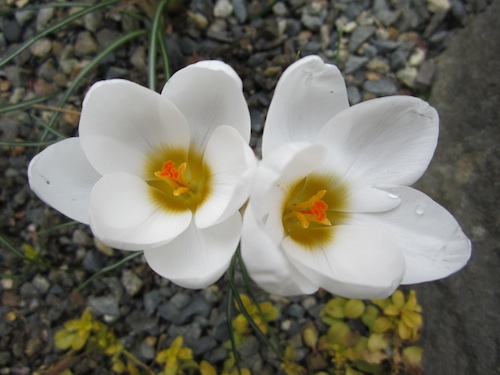
Crocus chrysanthus 'Ard Schenk'; photo by ALJ
|
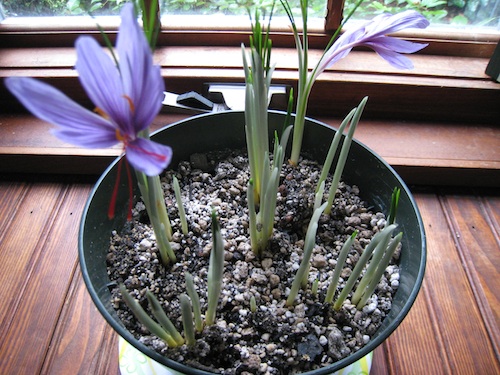
Crocus sativus; blurry photo by ALJ
|
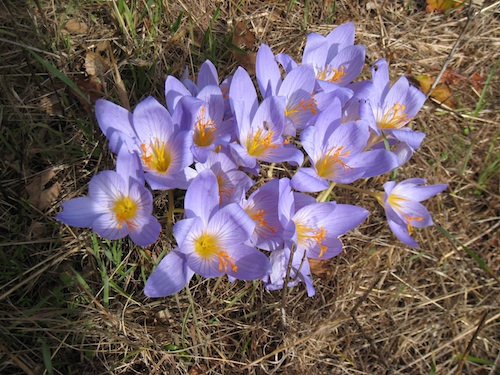
Crocus speciosus; photo by ALJ
|
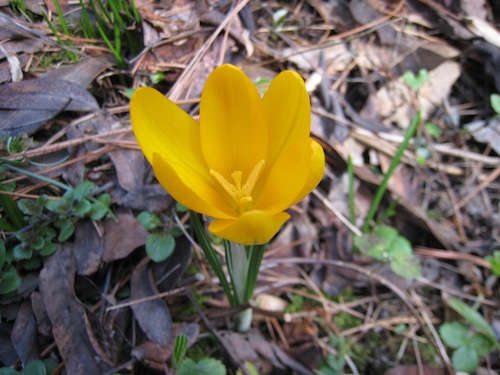
Crocus x stellaris; photo by ALJ
|
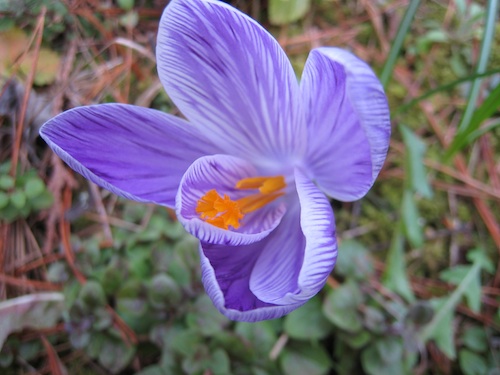
Crocus vernus; photo by ALJ
|

